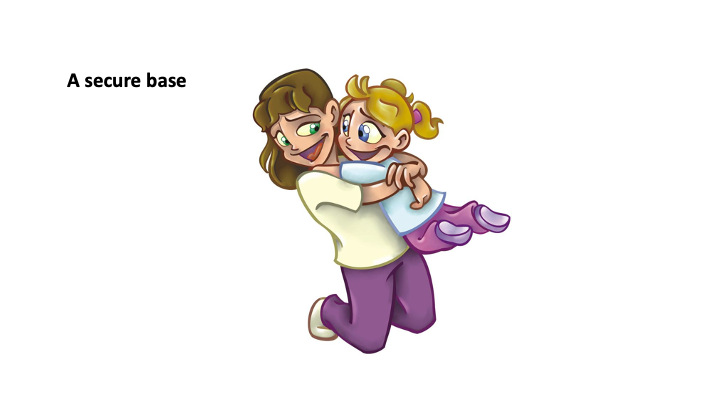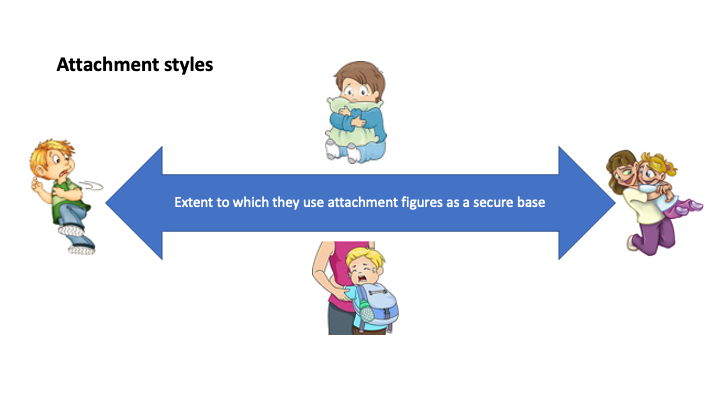
Attachment refers to the dependency relationships a child forms to the adults in their life who look after them, beginning in the first year of life (noticeable from 6-8 months), and developing progressively over the first four years of life. Central to the concept of attachment is the idea of a secure base. The dependency relationship the child develops towards the adults who care for them (referred to as the attachment relationship and attachment figures) becomes the secure base from which the child launches out into the world, and to whom the child returns for comfort and reassurance before launching out again. Having attachment figures that can be trusted and depended upon forms a necessary condition for the child to explore their world without anxiety and, in doing so, supports all aspects of their developmental progress.

Not all children have the same type of attachment relationship with the adults who care for them. Attachment varies depending on the child’s experience of care. Extensive research has identified four predominant attachment styles. When thinking about the child’s development, the optimal attachment style is a secure attachment. Children who form a secure attachment to the adults who care for them use these adults as a source of comfort and reassurance so that they can launch into the world without being restricted by unnecessary worry or fear. This attachment style is optimal because development unfolds through exploration, and a secure attachment style is optimal for exploration.
Other children have an insecure attachment to the adult or adults who care for them. Some of these children orient to their attachment figures for relief from distress but are not easily reassured so that they might launch back into the world. They might be viewed as unnecessarily clingy and temperamental and, relative to securely attached children, their exploration restricted. In Attachment Theory, these children are typically referred to as having an Insecure-Ambivalent attachment style.
Other children have what is known as an Insecure-Avoidant attachment style. These children do not use their attachment figures enough for comfort and reassurance. Though they appear to be self-reliant, they are actually overly anxious which, in turn, restricts their exploration (and development).
A fourth group of children show a more concerning pattern of behaviour. They orient to their attachment figure, only to experience uncertainty when doing so. These children are referred to as having a Disorganised attachment style. They are observed to need and avoid their attachment figures. Their priority is not exploring their world (and growing and developing from doing so). In contrast to other children, the most important driver of their approach to life and relationships is achieving feelings of safety.
A fifth group of children have no attachment to anyone. These children have lacked opportunity to form an attachment to someone who provides care on a consistent basis. As with insecure and disorganised attachment styles, the development of these children is restricted by unrelieved anxiety and an intense focus on coercively controlling their environment to achieve needs provision. These children struggle to form mutually satisfying dependency relationships with the adults who care for them.

Attachment styles are profoundly influenced by the child’s experience of care. A child whose parents are connected with what they are doing as a parent and with the child’s experience is more likely to develop a secure attachment style. A secure attachment style represents the optimal condition for the child to fulfil their potential and enter adulthood with the knowledge and capabilities to be successful (including in parenting their own children).
For the sake of the child’s development (and wellbeing), attachment security is the goal.
Click here to access the next page in this module.
Click here to purchase the PDF Handbook for this self-paced learning module.
